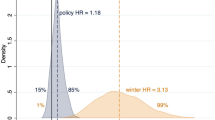Abstract
The recovery of wolf populations in the United States (U.S.) is hampered by ongoing human-wolf conflicts. In particular, the illegal killing of grey wolves (Canis lupus), red wolves (Canis rufus), and Mexican wolves (Canis lupus baileyi) protected under the U.S. Endangered Species Act has contributed to relatively high mortality rates in some areas. One issue is that wolves are often mistaken as coyotes (Canis latrans) and illegally shot by hunters. To minimise cases of mistaken identity, stricter regulation of coyote hunting is being adopted in some areas where endangered wolves exist. Here we argue that such management should be adopted more widely, and especially in areas where wolves are at low densities or recolonising new areas. Such a proposal may face opposition, particularly where coyote hunting is common, or where coyotes are perceived as a threat to human enterprises such as livestock ranching. Appropriate education and training is needed to ensure that the public is aware that (i) wolves and coyotes are difficult to distinguish from a distance and (ii) coyotes are far too resilient to be affected by most periodic eradication programs, let alone from derbies or recreational hunting. We conclude that recreational hunting of coyotes could restrict wolf recolonisation while providing little benefit to animal agriculture. Consideration of new management strategies is therefore required to assist with wolf restoration efforts and to minimise ongoing human-wildlife conflicts.

Similar content being viewed by others
References
Borg BL, Brainerd SM, Meier TJ, Prugh LR (2015) Impacts of breeder loss on social structure, reproduction and population growth in a social canid. J Anim Ecol 84:177–187. doi:10.1111/1365-2656.12256
Bruskotter JT, Wilson RS (2014) Determining where the wild things will be: using psychological theory to find tolerance for large carnivores. Conserv Lett 7:158–165. doi:10.1111/conl.12072
Bruskotter JT, Vucetich JA, Enzler S et al (2014) Removing protections for wolves and the future of the U.S. Endangered Species Act (1973). Conserv Lett 7:401–407. doi:10.1111/conl.12081
Carroll C, Vucetich JA, Nelson MP et al (2010) Geography and recovery under the U.S. endangered species act. Conserv Biol 24:395–403. doi:10.1111/j.1523-1739.2009.01435.x
Center for Biological Diversity (2014) Long-wandering Endangered Female Wolf Shot in Utah. http://www.biologicaldiversity.org/news/press_releases/2014/gray-wolf-12-29-14.html. Accessed 21 Jan 2015
Connolly GE, Longhurst WM (1975) The effects of control on coyote populations: a simulation model. Division of Agricultural Science, University of California, Davis, Bulletin 1872
Crabtree RL, Sheldon JW (1999) Coyotes and canid coexistence. Carnivores in ecosystems: the Yellowstone experience. Yale University Press, New Haven, pp 127–163
Enzler SA, Bruskotter JT (2009) Contested definitions of endangered species: the controversy regarding how to interpret the phrase “a significant portion a species’ range”. Va Environ Law J 27:1–65
Gese E (2005) Demographic and spatial responses of coyotes to changes in food and exploitation. Wildl Damage Manag Conf 11:271–285
Hinton J, Chamberlain M, Rabon D (2013) Red wolf (Canis rufus) recovery: a review with suggestions for future research. Animals 3:722–744. doi:10.3390/ani3030722
Knowlton FF, Gese EM, Jaeger MM (1999) Coyote depredation control: an interface between biology and management. J Range Manag 52:398–412
Leagle (2014) RED WOLF COALITION v. COGDELL. In: Decisions. http://leagle.com/decision/In%20FDCO%2020141114B23/RED%20WOLF%20COALITION%20v.%20COGDELL. Accessed 30 Mar 2015
Liberg O, Chapron G, Wabakken P et al (2012) Shoot, shovel and shut up: cryptic poaching slows restoration of a large carnivore in Europe. Proc R Soc B Biol Sci 279:910–915. doi:10.1098/rspb.2011.1275
Murray DL, Smith DW, Bangs EE et al (2010) Death from anthropogenic causes is partially compensatory in recovering wolf populations. Biol Conserv 143:2514–2524. doi:10.1016/j.biocon.2010.06.018
Murray DL, Bastille-Rousseau G, Adams JR, Waits LP (in press) The challenges of red wolf conservation and the fate of an endangered species recovery program. Conserv Lett. doi: 10.1111/conl.12157
North Carolina Wildlife Resources Commission (2015) Wildlife commission passes resolutions regarding red wolves. http://www.ncwildlife.org/Default.aspx?tabid=416&IndexId=10015. Accessed 2 Apr 2015
Ripple WJ, Wirsing AJ, Wilmers CC, Letnic M (2013) Widespread mesopredator effects after wolf extirpation. Biol Conserv 160:70–79. doi:10.1016/j.biocon.2012.12.033
Ripple WJ, Estes JA, Beschta RL et al (2014) Status and ecological effects of the world’s largest carnivores. Science 343:1241484
Smith DW, Bangs EE (2009) Reintroduction of wolves to Yellowstone National Park: history, values and ecosystem restoration. Reintroduction of top order predators. Wiley-Blackwell, London, pp 92–125
Thiel RP (2001) Keepers of the wolves: the early years of wolf recovery in Wisconsin. The University of Wisconsin Press, Madison
USFWS (2014a) Red Wolf Recovery Program: 2nd Quarter Report January–March 2014. U.S. Fish and Wildlife Service
USFWS (2014b) Mexican Wolf Recovery Program: 2013 Progress Report. U.S. Fish and Wildlife Service
USFWS (2015a) Red wolf recovery program. Questions and Answers. http://www.fws.gov/redwolf/faq.html. Accessed 4 Aug 2015
USFWS (2015b) The Mexican wolf recovery program. Population statistics. http://www.fws.gov/southwest/es/mexicanwolf/MWPS.cfm. Accessed 4 Aug 2015
Vucetich JA, Nelson MP, Phillips MK (2006) The normative dimension and legal meaning of endangered and recovery in the U.S. Endangered Species Act. Conserv Biol 20:1383–1390. doi:10.1111/j.1523-1739.2006.00493.x
Author information
Authors and Affiliations
Corresponding author
Additional information
Communicated by David Hawksworth.
Rights and permissions
About this article
Cite this article
Newsome, T.M., Bruskotter, J.T. & Ripple, W.J. When shooting a coyote kills a wolf: Mistaken identity or misguided management?. Biodivers Conserv 24, 3145–3149 (2015). https://doi.org/10.1007/s10531-015-0999-0
Received:
Revised:
Accepted:
Published:
Issue Date:
DOI: https://doi.org/10.1007/s10531-015-0999-0




